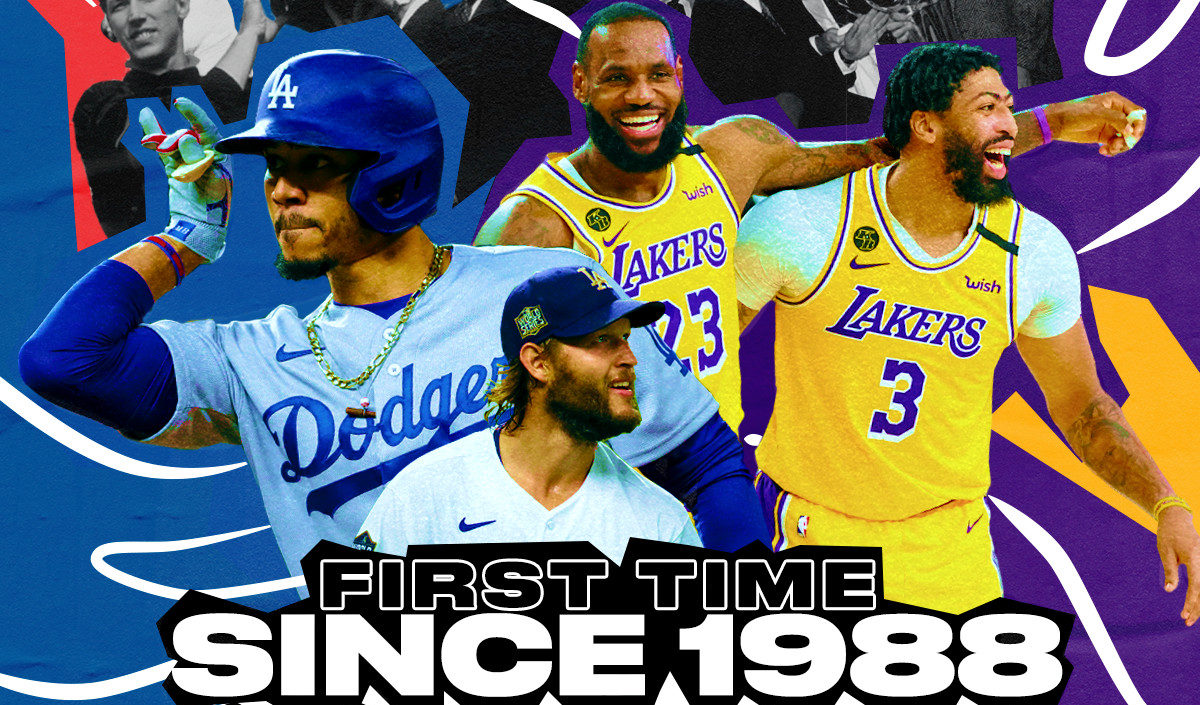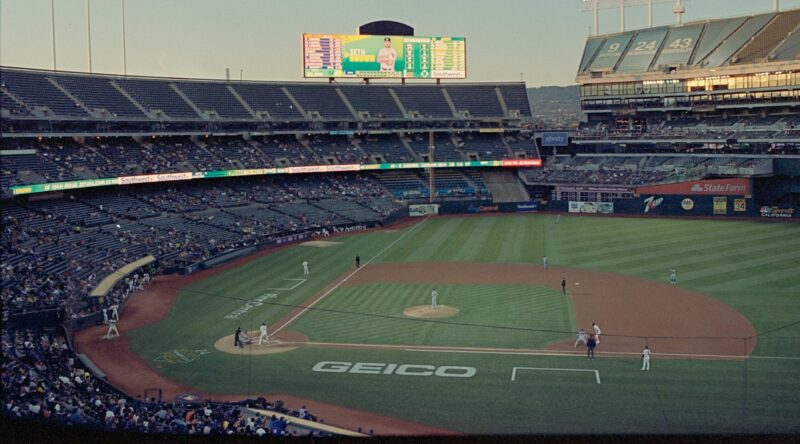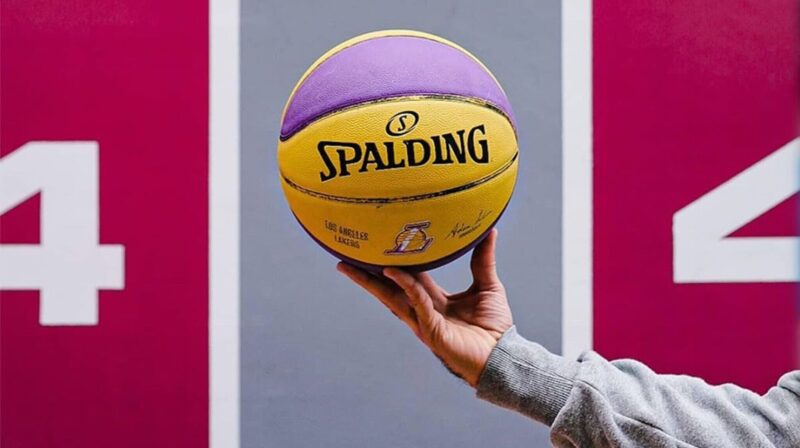In a 16-day span in October, LA’s two most famous sports franchises each won championships. This short span between titles is a unique 2020 phenomenon and hopefully something that will never be able to be duplicated, future pandemics willing. The Lakers struck first (and four months belatedly due to the pandemic’s causing the NBA to shut down before they implemented the “bubble” in Orlando), beating the Miami Heat. The Dodgers were next, taking down the Tampa Bay Rays in the World Series. But that wasn’t the only parallel between LA’s two new champion teams.
Both LA teams beat teams from Florida that were not expected to be this good this year and that were filled with relatively unknown young players, in contrast to the big names on both LA squads’ rosters.
Both the Lakers and Dodgers came into the season with high expectations after trading young talent for an established-but-still-early-in-his-prime superstar during the offseason (Anthony Davis for the Lakers and Mookie Betts for the Dodgers).
Both teams also had to compete in these high expectations with local rivals who also added big-name talent. And yet Kawhi Leonard and Paul George couldn’t get the Clippers past the second round of the playoffs. And Anthony Rendon and the abbreviated return of Shohei Otani to the mound couldn’t get the Angels to even sniff the playoffs, despite the fact that the majority of Major League teams made the postseason this year.
Speaking of MLB’s bloated 2020 playoffs that included 16 teams, this meant that both the Lakers and Dodgers each had to win four rounds of postseason play to claim their championships, a first for a Major League Baseball team (and something which is infuriating and should never happen again).
Both title teams won in six games, giving fans just enough drama to worry they might not win, but not so much that they had to pop pills while agonizing through a game seven.
Both are proud franchises with numerous championships that were experiencing a title drought. The Dodgers won their seventh title, breaking a 32-year drought. The Lakers won their 17th, tying the Celtics for most all-time, and breaking a 10-year drought. But a 10-year drought for the Lakers is arguably more shocking than a 32-year drought for the Dodgers, given that the Lakers had won 10 in a 31-year span before their dry spell began.
Both teams have a lot of MVP hardware in their collections. The Dodgers have three former MVPs in Betts, Clayton Kershaw, and Cody Bellinger. And the Lakers have four former MVPs. Of course, they are all LeBron James.
Both teams even have Magic Johnson as an iconic franchise representative. Although, of course, it’s the Lakers franchise for which he became an icon, it’s the Dodgers franchise that he currently represents as a part-owner. But, having been in charge of the Lakers as their President of Basketball Operations when they brought in LeBron, Magic’s stamp looms larger on these Lakers than on the Dodgers.
Despite huge expectations and lots of star power, both teams did have hurdles to overcome on their way to glory. The Lakers’ supporting cast for their two studs was questionable. Their rotation included big names who were past their primes like Dwight Howard and Rajon Rondo and, in Alex Caruso, a no-name who had played more games in the NBA’s developmental G League than he had in the NBA coming into this season.
If I told you that after the 2019 season the Dodgers would lose both pitchers who would go on to be the 2020 AL Cy Young second and third-place finishers for other teams (Kenta Maeda for the Twins and Hyun Jin Ryu for the Blue Jays), not get a single inning pitched out of the former Cy Young winner they acquired along with Betts (David Price sat out the season due to COVID-19 concerns), and get subpar seasons from Max Muncy (.192 avg., .720 OPS), Joc Pederson (.190 avg, .681 OPS), and Bellinger (.239 avg, .779 OPS a year after winning the MVP Award), you would probably think that they would underachieve in 2020. Maybe they wouldn’t even make those bloated playoffs! And yet despite all this, they had the best record in baseball, with the highest winning percentage (.717) since the 1954 Cleveland Indians and the biggest run differential (scoring 2.27 runs per game more than they allowed) since the 1939 New York Yankees!
One big difference between the two LA teams is how they used homegrown talent and players who had been on their rosters for a long time. Specifically, the Dodgers used players who fit these categories to play nearly every position. Of the 11 Dodgers to log 100 plate appearances in 2020, five were homegrown, while another four have spent the bulk of their careers as Dodgers. All six starting pitchers who started more than two games for the Dodgers in 2020 were homegrown, from the legendary Kershaw down to the rookie Dustin May. So was their longtime closer Kenley Jansen. Iconic former Dodgers manager Tommy Lasorda famously said “Cut me and I’ll bleed Dodger blue.” Well, the 2020 Dodgers were composed of a whole team that bleeds Dodger blue, a big anomaly in today’s era of free agency and frequent player movement. The amount of home-grown talent on these Dodgers is actually rather shocking for a big market, high payroll team. Betts, AJ Pollock, and Justin Turner are the only three star-level players who came from other teams. And Turner didn’t blossom into a star until he got to LA, and he has been on the team so long (7 years) that he feels like a homegrown player.
The Lakers, on the other hand, used their homegrown talent as trade bait to acquire Anthony Davis when they sent Lonzo Ball, Brandon Ingram, and Josh Hart to the Pelicans. Kyle Kuzma and Alex Caruso were the only players in the 2019-20 Lakers’ rotation who came up as Lakers. And Kuzma and Kentavious Caldwell-Pope are the only Lakers who have played for the team for more than two seasons.
Both teams are well-positioned to repeat next year. The Dodgers’ best players are still in their 20s, except for Kershaw (32), Pollock (32), and Turner (35, and now a free agent). The Lakers have already added Dennis Schroder (18.9 points per game for the Oklahoma City Thunder last season) and poached Montrezl Harrell away from the Clippers (18.6 points per game last season). True, LeBron is a grand old man of the hardcourt at this point (he turns 36 a week after the new season starts), but he seemed to get better in the 2019-20 season than he was in his injury-marred down year of 2018-19 so there’s little reason to expect any significant falloff in the new season… unless we worry that the short two-month offseason won’t give his body time to recover from this past season. This is a valid concern, but in this era of “load management,” the Lakers might emulate their local rival’s plan for their star and put LeBron on the Kawhi Leonard rest program this season so that he’ll be ready for the playoffs. Regardless, 2021 will be filled with more big expectations for both the Lakers and Dodgers… and perhaps even a parade at some point to honor their 2020 titles, if the pandemic situation permits.





